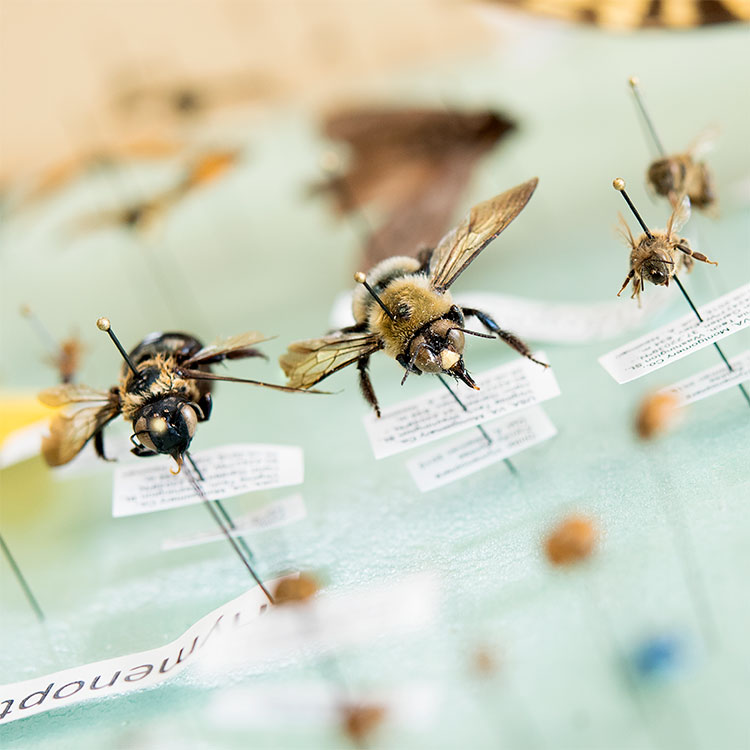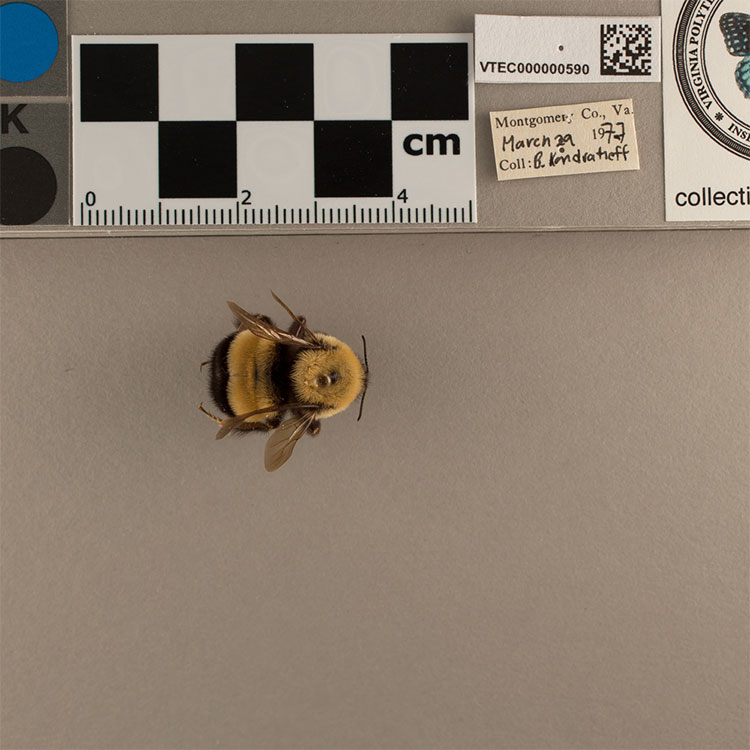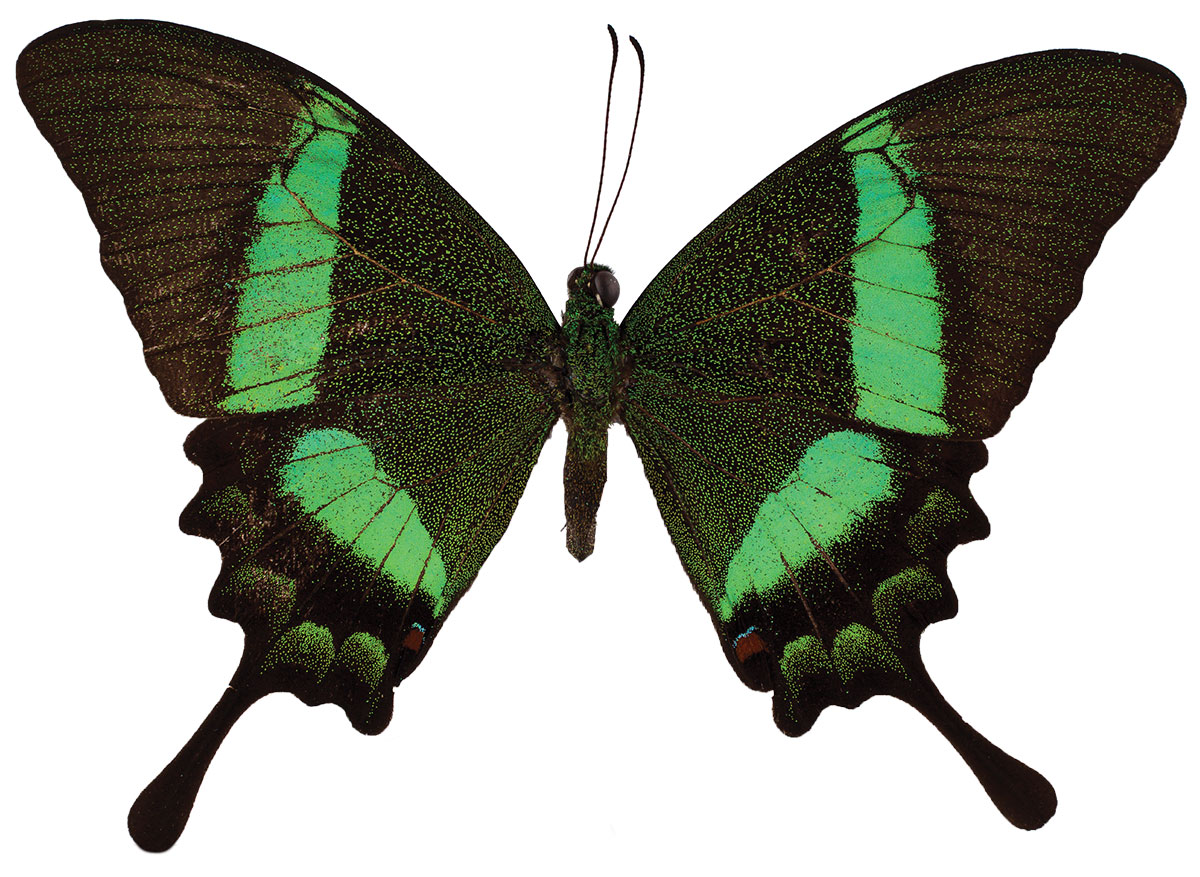
Emerald swallowtail, Papilio palinurus
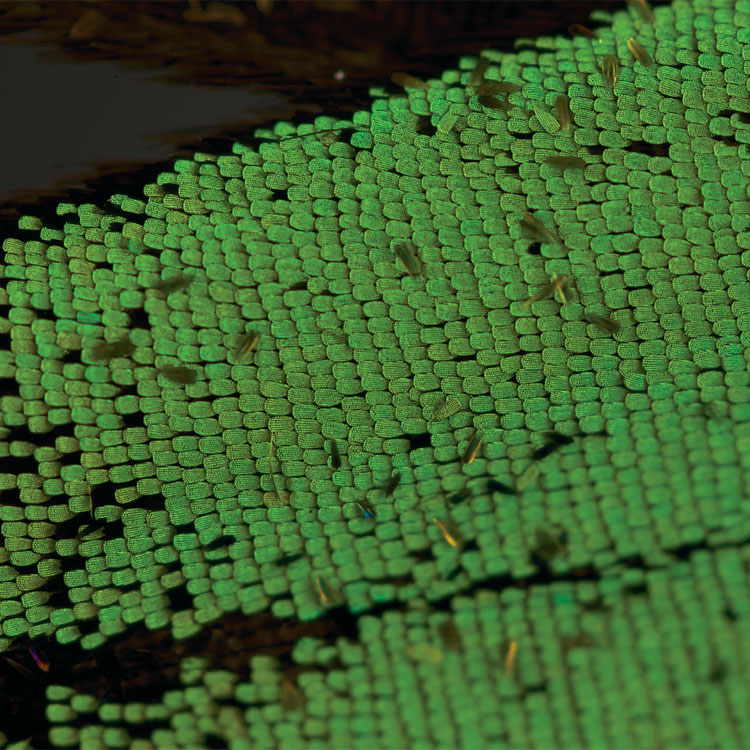
The top and bottom of the emerald swallowtail's wing differ in color dramatically.
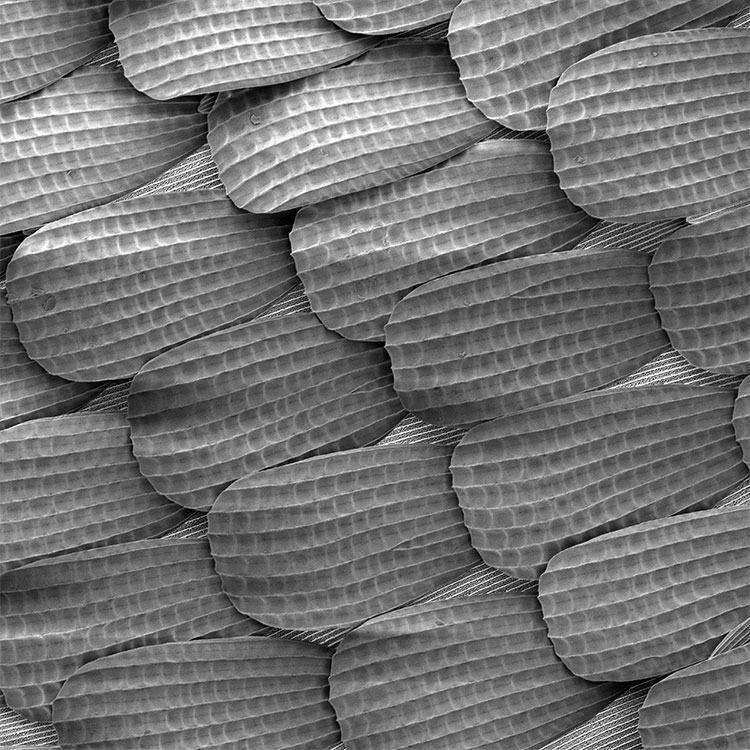
Butterfly wings consist of thousands of microscopic scales, which overlap like roof tiles, appearing as dust to the naked eye.

Each scale has multiple ridges, cross ribs, and other structures, separated by air. When light hits the different layers, it diffracts, causing the waves to scatter as they travel and then interfere with each other so that certain color wavelengths cancel out and others intensify.
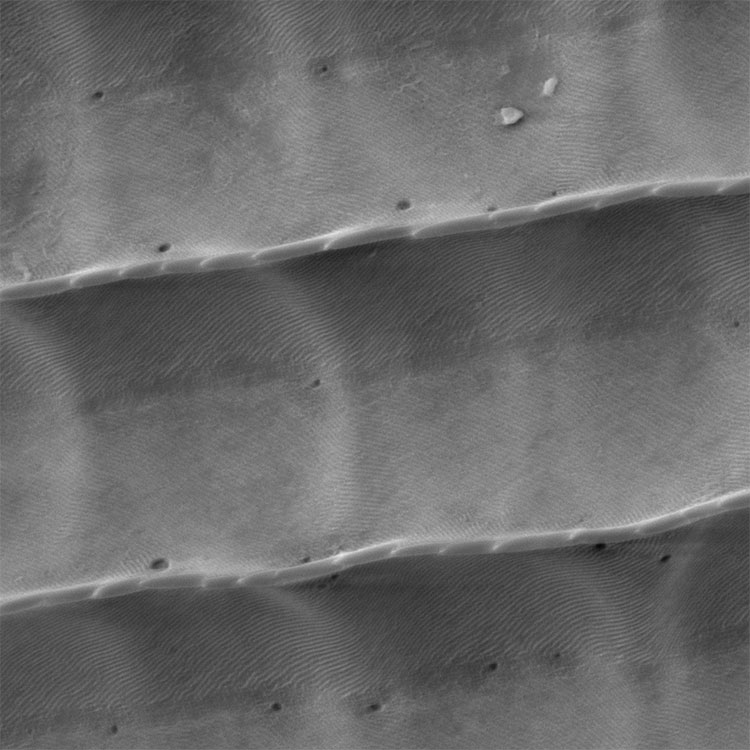
In the emerald swallowtail, the miniature bowl-shaped microstructures reflect yellow and blue light away from the scale. Since they are so close together, the light blends, and our eyes see it as green.
Butterflies are among nature's most captivating insects, in part because of their striking colors, which seem to shimmer and change as they flutter from flower to flower.
A butterfly's color may act as camouflage, signal a warning, or attract potential mates. Butterflies get their colors through two different sources: pigmentary color and structural color.
Consider the emerald swallowtail, Papilio palinurus.
The top and bottom of the emerald swallowtail's wing differ dramatically in color. The bottom surface is comprised of dusty grays with some blue and orange dots toward the bottom of the wing. The top colors, however, appear as dark green with a sudden streak of radiant green on either side. The display is produced by tiny microstructures, not pigment.
Pigmentary color comes from chemical pigments that absorb and reflect light. For example, the red of a ladybug comes from the fact that more red light is reflected compared to any other hue. Structural color results from the specific sculpturing of the butterfly's wings, which helps explain why the colors move and change. This quality, called iridescence, occurs frequently in nature, notably in mother-of-pearl seashells, fish, and peacocks. Iridescence results as light passes through a transparent, multilayered surface and is reflected more than once. It also occurs when light is scattered by microscopic grooves or gratings on the surface, which is the same phenomenon as in the shimmer of compact discs.
Paul Marek is an assistant professor in Virginia Tech's Department of Entomology. Marek's lab focuses on studies of the evolution of coloration and taxonomy, the science of naming and classifying species. His research team has investigated the vibrant warning coloration of Appalachian millipedes and the bioluminescence of Californian millipedes and is now analyzing structural colors of insects conserved in the Virginia Tech Insect Collection.
Around the Drillfield
- Athletics
- Beyond Boundaries
- Corps of Cadets
- How Tech Ticks
- Infographic
- News
- What's in it?
